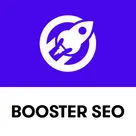In the digital age, images are a powerful tool to enhance website engagement and improve user experience. However, without proper optimization, they can slow down your site and hurt your search engine rankings. This blog post delves into the strategies to effectively optimize images for SEO, ensuring your site remains fast, attractive, and discoverable.
As an essential component of digital content, images not only captivate users but also convey messages more dynamically than words alone. Yet, their potential to hinder site performance is significant if not managed correctly. Large image files can increase page load times, frustrating users and leading to higher bounce rates, which ultimately impacts your site's visibility in search results.
To tackle these challenges, understanding the intricacies of image optimization is crucial. Strategies such as compressing image files without losing quality, using appropriate formats like JPEG or WebP, and employing responsive images to ensure compatibility across devices can substantially enhance website performance. Additionally, implementing descriptive file names and alt text can further optimize images for search engines, making them more discoverable.
By mastering these techniques, you can leverage images to boost engagement while maintaining a fast and efficient website. Dive into the details with us as we explore each strategy and equip you with the expertise needed to excel in the digital space.
Understanding Image Optimization
Image optimization is a critical aspect of website performance and search engine optimization (SEO). It involves reducing the file size of your images while maintaining quality, ensuring faster load times and better user experience. Optimized images positively impact SEO by increasing site speed, which is a ranking factor for search engines. Various image types, such as JPEG, PNG, and WebP, serve different purposes, and choosing the right type enhances efficiency. Unoptimized images can slow down your website, leading to higher bounce rates and lower rankings. To optimize images effectively, consider using tools that compress files without significant quality loss, utilize descriptive filenames and alt texts, and ensure images are responsive and properly scaled for different devices.

Choosing the Right File Format
Choosing the right file format is crucial for optimizing images for SEO. Each image format, such as JPEG, PNG, and SVG, serves different purposes, and understanding their benefits and limitations aids in selecting the most suitable one for your needs.
- JPEG: Ideal for photographs and images with gradients. It offers a good balance between quality and file size but lacks transparency support.
- PNG: Best for images requiring high quality and transparency, like logos. However, its larger file size may affect loading times.
- SVG: Perfect for scalable graphics such as icons and logos, maintaining quality regardless of size. Its lightweight nature ensures fast loading.
Selecting the appropriate format ensures faster load times, better user experience, and improved search engine rankings.

Effective Image Compression Techniques
Optimizing images for SEO is crucial in enhancing your website's performance and user experience. Effective image compression techniques allow you to reduce file sizes without compromising on quality, which is vital for maintaining a fast loading speed and high visual appeal. Utilize tools like Photoshop, TinyPNG, or image optimization plugins such as Smush for WordPress to achieve this balance.
- Lossless Compression: Retains original quality while reducing file size by eliminating unnecessary metadata.
- Lossy Compression: Offers higher compression rates with slight quality loss, suitable for faster web pages.
- File Format Selection: Choose formats wisely—JPEGs for photographs, PNGs for graphics with transparency, and SVGs for vector images.
Balancing quality and size not only improves load times but also helps in achieving better SEO results by enhancing user engagement and interaction.

Optimizing Image Titles and Alt Text
Optimizing image titles and alt text is a cornerstone of enhancing your website's SEO performance. Descriptive filenames act as an initial signal to search engines, making it crucial to rename generic file names like IMG_001.jpg to something more contextual, such as red-velvet-cake.jpg.

Equally important is the alt text, which serves both accessibility and SEO. It should describe the image succinctly while naturally incorporating relevant keywords. For example, instead of simply writing \"cake,\" a well-crafted alt text would read, \"A delicious slice of red velvet cake topped with cream cheese frosting,\" capturing essential details.
- Ensure filenames and alt text are concise, descriptive, and keyword-rich.
- Avoid keyword stuffing and keep the language natural.
- Consider the user’s perspective for accessibility as well as search engine visibility.
These practices not only improve image search rankings but also make your content more inclusive and engaging for all users.
Leveraging Image Sitemaps
Implementing image sitemaps can significantly enhance the discoverability and indexing of your images by search engines. This process involves creating an XML sitemap specifically for images to provide search engines with detailed information about each image on your site.

To begin, compile a list of image URLs you wish to include in the sitemap. Utilize sitemap-generating tools or plugins if available, ensuring all relevant attributes, such as <image:loc>, <image:caption>, and <image:title> are incorporated for optimal detail.
- Prepare the image URLs and accompanying metadata.
- Use an online tool or plugin to create the sitemap in XML format.
- Include the sitemap path in your
robots.txtfile. - Submit the sitemap through Google Search Console for efficient indexation.
Regularly update your image sitemap to reflect changes or additions, ensuring search engines can efficiently track and index all visual content. By leveraging image sitemaps effectively, you can enhance the visibility of your images, contributing positively to your site's overall SEO performance.
Utilizing Responsive Images
Responsive images play a significant role in maintaining high-quality visuals across various devices and screen sizes. By implementing the srcset and sizes attributes in HTML, you can significantly improve an image's adaptability and appearance, ultimately enhancing SEO. These attributes allow browsers to select the most appropriately sized image for a user's device, optimizing loading speeds and user experience. This is crucial because faster load times lead to better engagement and lower bounce rates, which are key factors in search rankings. Here's a quick guide to utilizing responsive images effectively:
- Srcset Attribute: Define multiple image sources for varying resolutions.
- Sizes Attribute: Specify different image display sizes for various viewport widths.
- Adaptation: Use
pictureelements combined with media queries for complex layouts.
Implementing these techniques not only aids in preserving image quality but also contributes to a broader SEO strategy by ensuring optimal performance and user satisfaction.

Mastering image optimization for SEO ensures your images not only look great but also contribute positively to search engine rankings. By implementing the strategies discussed, you can enhance your site's user experience, improve load times, and boost your visibility on search engines. Remember, well-optimized images are a cornerstone of an efficient and successful web presence.
Summarizing key points, start with compressing images without sacrificing quality to help load times while maintaining a visual punch. Implement descriptive, keyword-friendly file names and utilize alt text effectively to provide both accessibility and context for search engines. Don’t overlook the importance of choosing the right format, whether it's JPEG for detailed images or PNG for simpler ones.
As a call to action, take the time to regularly audit your site’s images, ensuring all elements align with SEO best practices. Embrace tools and plugins available for automating parts of the process, which can save time and ensure consistency.
In conclusion, optimizing images for SEO is not merely a technical task but an essential component of holistic digital strategy. With diligence and a focus on quality, your website's imagery can play a crucial role in achieving your SEO objectives, offering both beauty and efficiency. Leverage these insights to enhance your site's performance and gain a competitive edge in the digital landscape.













